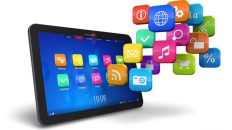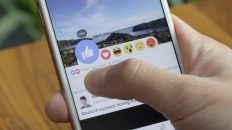 Marrying the Internet to handheld devices is becoming a necessity. Small businesses are learning to factor in the growing proliferation of smartphone devices into their marketing strategy. With their usage going up significantly, many small businesses are fast turning to QR (quick-response) codes to connect with prospects on the go.
Marrying the Internet to handheld devices is becoming a necessity. Small businesses are learning to factor in the growing proliferation of smartphone devices into their marketing strategy. With their usage going up significantly, many small businesses are fast turning to QR (quick-response) codes to connect with prospects on the go.
According to an estimate, there are close to 30 million people in the US, having smartphones that carry code-reading capabilities. QR codes visually resemble the universal pricing codes, which are there on most merchandise. However, instead of a bar of straight lines, they look like a maze of black boxes. They are placed in ads, in-store displays, product packaging or direct mail, and used to link to an array of features mainly to give a boost to sales.
Many small enterprises in the US have adopted the technology. Many Android and BlackBerry phones carry an app to read QR codes. A business can generate a QR code by using a code-making service that asks them to select the type of content, which they want users to get after scanning the code, whether it is a Web address or SMS. Then the business is required to enter that content and click ‘generate’. A bar code that pops up can be copied and pasted at no cost onto its advertising/ packaging.
Businesses can generate the quick-response codes by inserting ‘.qr’ into shortened links from Google or bitly. When users scan a code created this way, their device will call up whatever is at that shortened address. QR code is also used to direct people to the site. It is often displayed just next to select recommended products. Some other companies always link to interactive options and video while putting QR codes in the promotional materials. Upon scanning, users are linked to a mobile site with offers. The codes are used on packaging as well.
The quick-response codes do present a few challenges. Business owners may need to orient people about how to use them. Even though the former can download and use them mostly free of charge, the cost itself of developing promotional material, which pops up on customers’ devices can prove to be sort of a drag. There is also the issue of format.
Though QR is the dominant and widely used technical standard, few other out there can confuse businesses and customers alike. Since QR codes don’t adhere to a single standard currently, there is scope for confusion among your prospects. Customers get confused at times because not all reader apps manage to unscramble all the codes.
But the fact remains that more and more corporate entities now use them. Customers can place an order via QR codes in the advertisements, and have it ready when they reach the venue. A direct-mail postcard can includes a code, which links people to the mobile site. This can act as a great way to build a focused community, and create awareness about your products and services.




